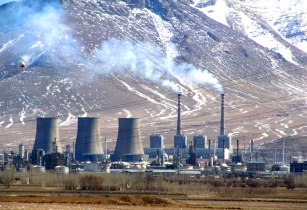Control Risks is an independent, global risk consultancy specialising in helping organisations manage political, integrity and security risks in complex and hostile environments and its RiskMap 2017 outlines the year ahead for the Middle East region
Control Risks has identified a number of key business risks for 2017, including the Trump administration, terrorism, and Brexit. However, there are a number of pressures that the Middle Eastern regions will have to endure in 2017.
One risk that Control Risk outline for the Middle East is the "intensifying geopolitical pressures driven by nationalism, global power vacuum, and proxy conflicts. Syria, Libya, Yemen and Ukraine are likely to remain intractable conflicts and the Middle East will continue to be shaped by friction between Saudi Arabia and Iran."
Control Risks also outline risks for the region entitled, 'Middle East: The politics and pitfalls of privatisation.' "A privatisation push across the Middle East and North Africa in 2017, including in Algeria, Egypt, Pakistan and Saudi Arabia, will act as a siren call to investors around the world. As foreign companies prepare bids for new projects and tune into public debates about the benefits that privatisation offers, they should closely inspect what is on offer – and from whom."
Control Risk outline the five top driver risks in 2017 for the MENA regions.
The big black swan of 2017 for the Middle East region will be a potential unravelling of the nuclear deal with Iran as a result of changes in US foreign policy under President Trump.
Under our main scenario which provides for continuity of the nuclear deal beyond 2017, the top five likely drivers of risks to international businesses in the Middle East are:
Geopolitics: Shifting global geopolitical relationships will be mirrored by a realignment of foreign policy alliances and priorities of major players in the Middle East. Countries such as Saudi Arabia, Egypt, Qatar and Iran will look to build or consolidate bridges with China, Japan, India and/or Russia to hedge against the uncertainty surrounding US’ and Europe’s engagement in the region.
Fiscal consolidation: Efforts to reduce government spending in response to low oil prices will continue to affect economic growth and dampen public investment levels across the region. They will also drive regulatory risk – particularly rises in local taxes and changes to local content regulations, as well as risks of non-payment and contract frustration.
Push for FDI: Most countries in the region are putting in place plans and strategic visions to increase their attractiveness to foreign investors in an effort to diversify their economies and secure growth in sectors other than oil and gas. While these efforts may be successful in non-strategic sectors such as education, healthcare and e-commerce might, they are unlikely to succeed in other major sectors, such as energy or telecommunications, where prevailing statists trends and a desire for government interference will likely limit the extent of privatisation and liberalisation.
Weakening of Islamic State: The collapse of IS territory is likely to prompt a global exodus of foreign fighters. As IS falls, many will be killed in battle, some captured trying to escape and others recruited into other groups – including rival al-Qaida affiliate Jabhat Fatah al-Sham (JFS) or continuing to operate in weak governance areas, such as the Sinai in Egypt, as well as parts of Libya, Syria and Iraq. The rest will most likely return to their home countries in Western Europe, Russia, North Africa or the GCC and will try to imbue local extremist networks in their home countries with their experience and capability. While in Iran and the GCC this trend is unlikely to trigger any significant increase in the threat of attacks, countries such as Tunisia, Morocco, Lebanon and Jordan may face higher challenges to contain returning IS fighters.
Cyber: The conflict in Syria and the broader complex gepolitical situation in the Middle East is likely to have a significant impact on the regional cyber threat landscape in the coming year. In particular, Iran has continued to develop its capabilities and lags behind only Israel in the region in terms of its ability to conduct disruptive cyber attacks on geopolitical rivals, though other states are also seeking to develop these tools for their own arsenals. In 2017, Iran and these emerging actors are likely to use their capabilities to conduct plausibly deniable data-wiping attacks in its rivals, using activist groups to claim credit for the incidents so as to complicate the victims’ response. These attacks are particularly likely to target governmental bodies, symbolic targets and elements of critical national infrastructure in rival states.






